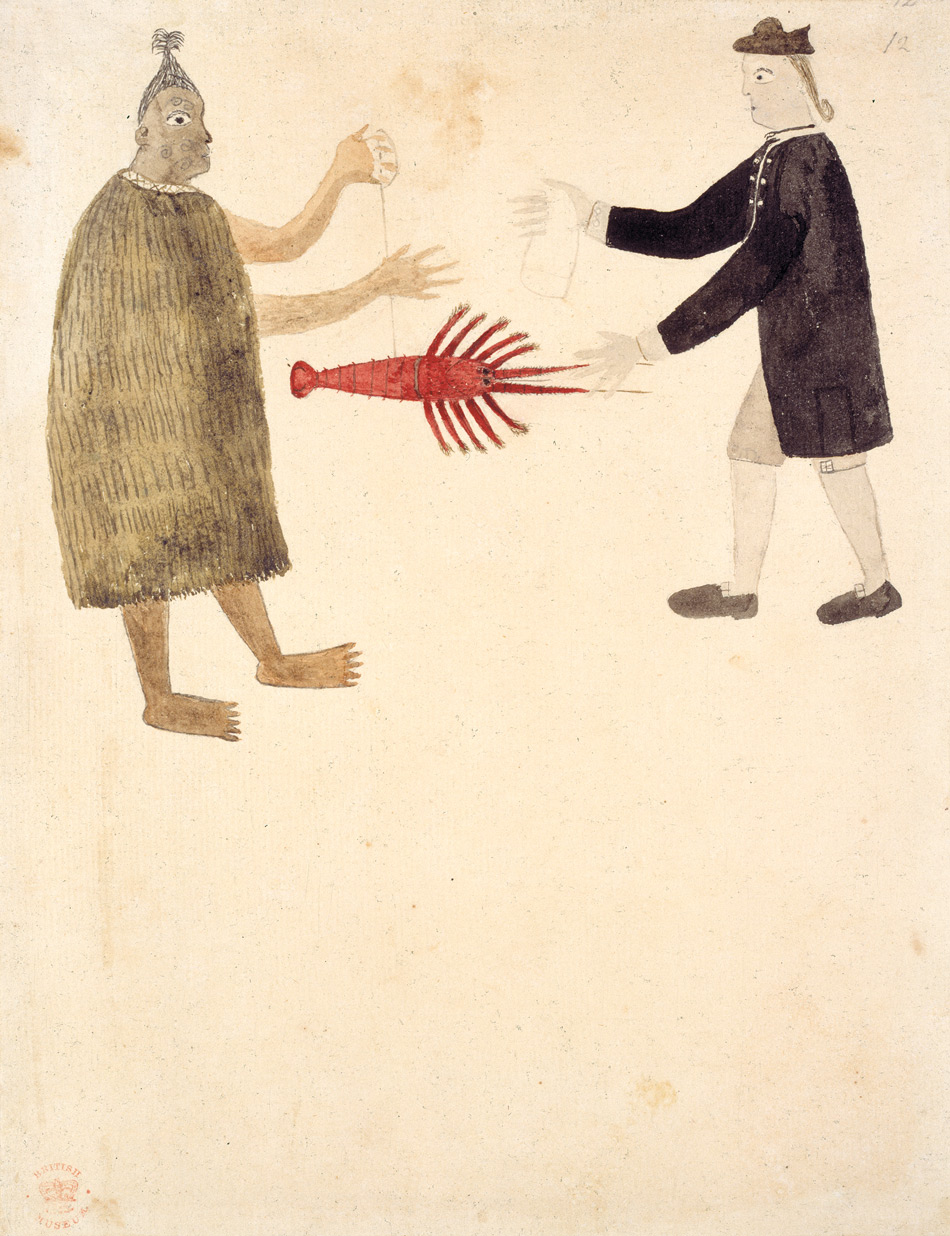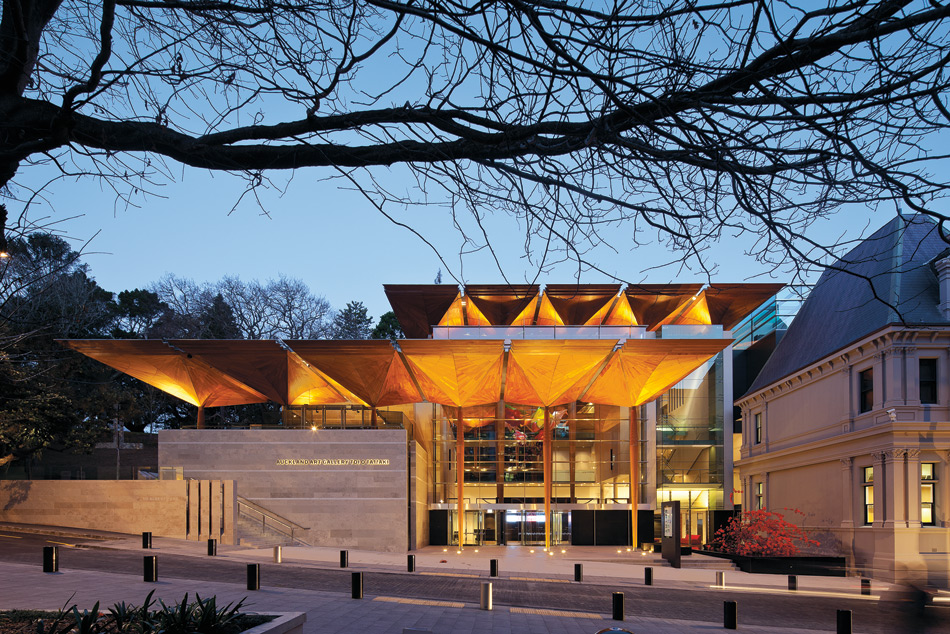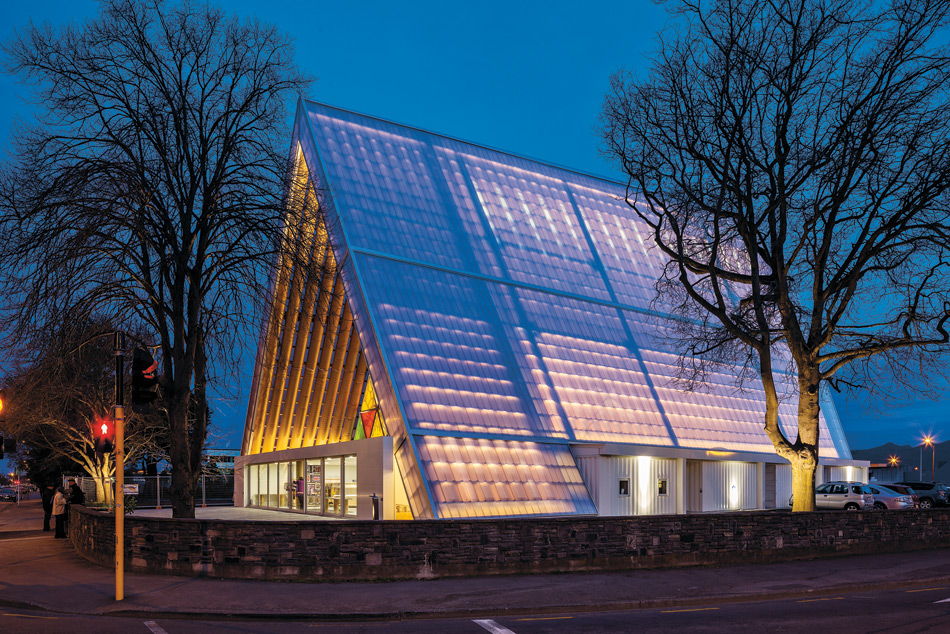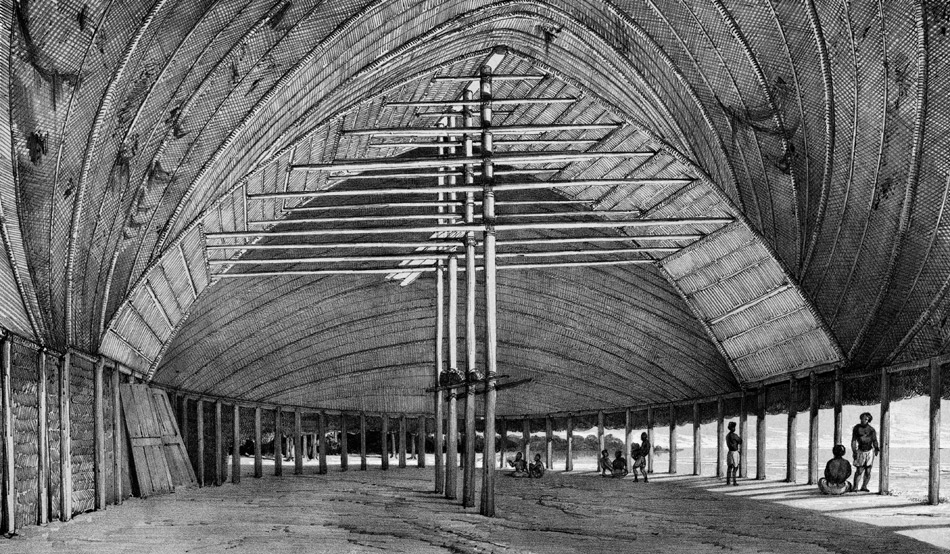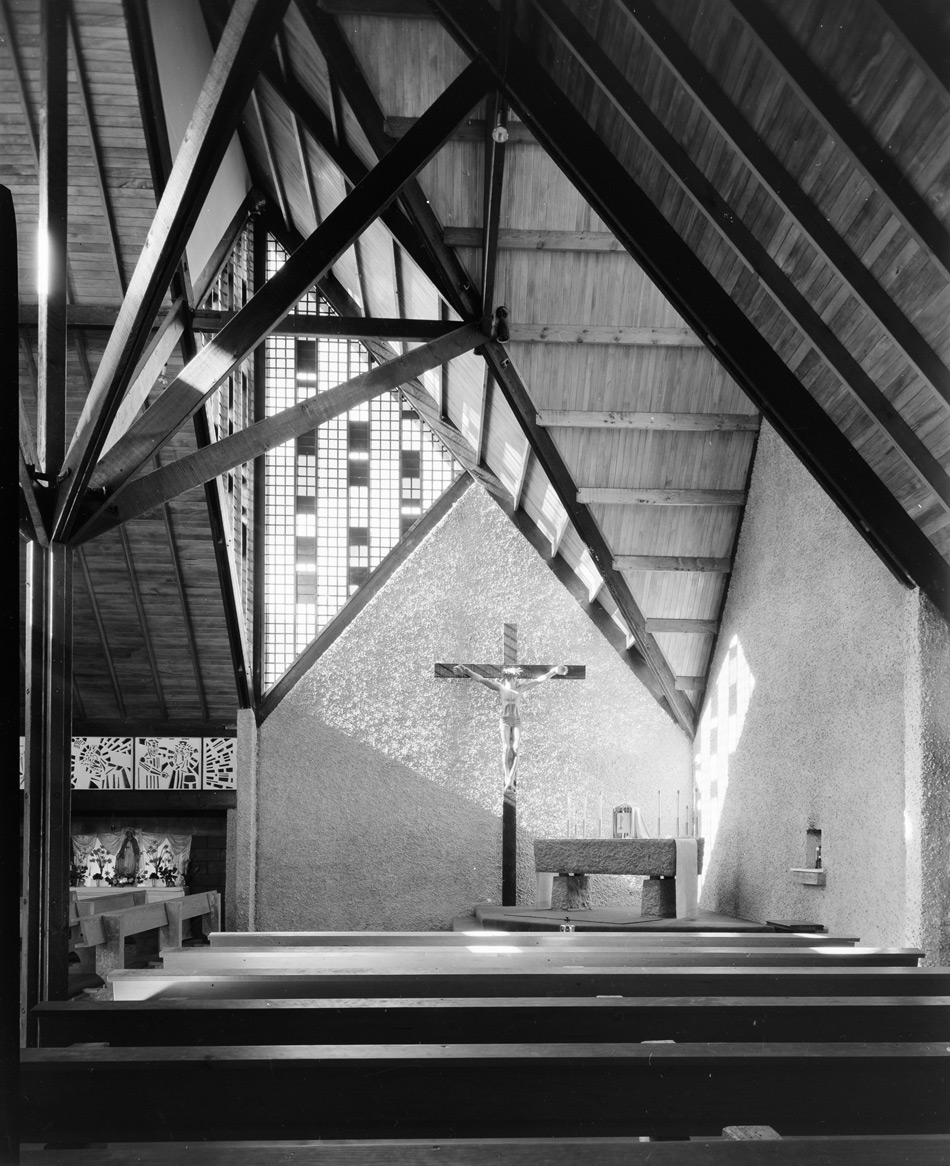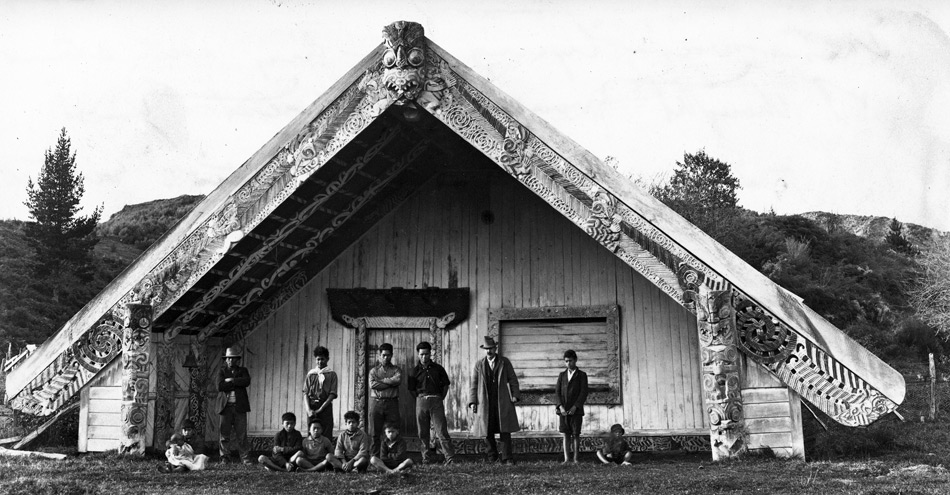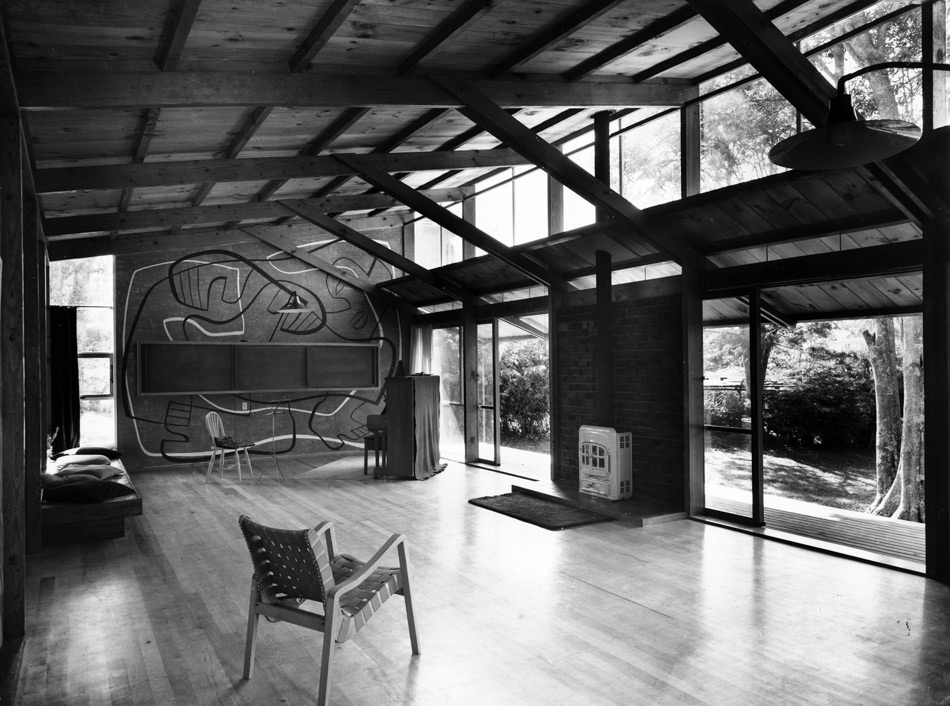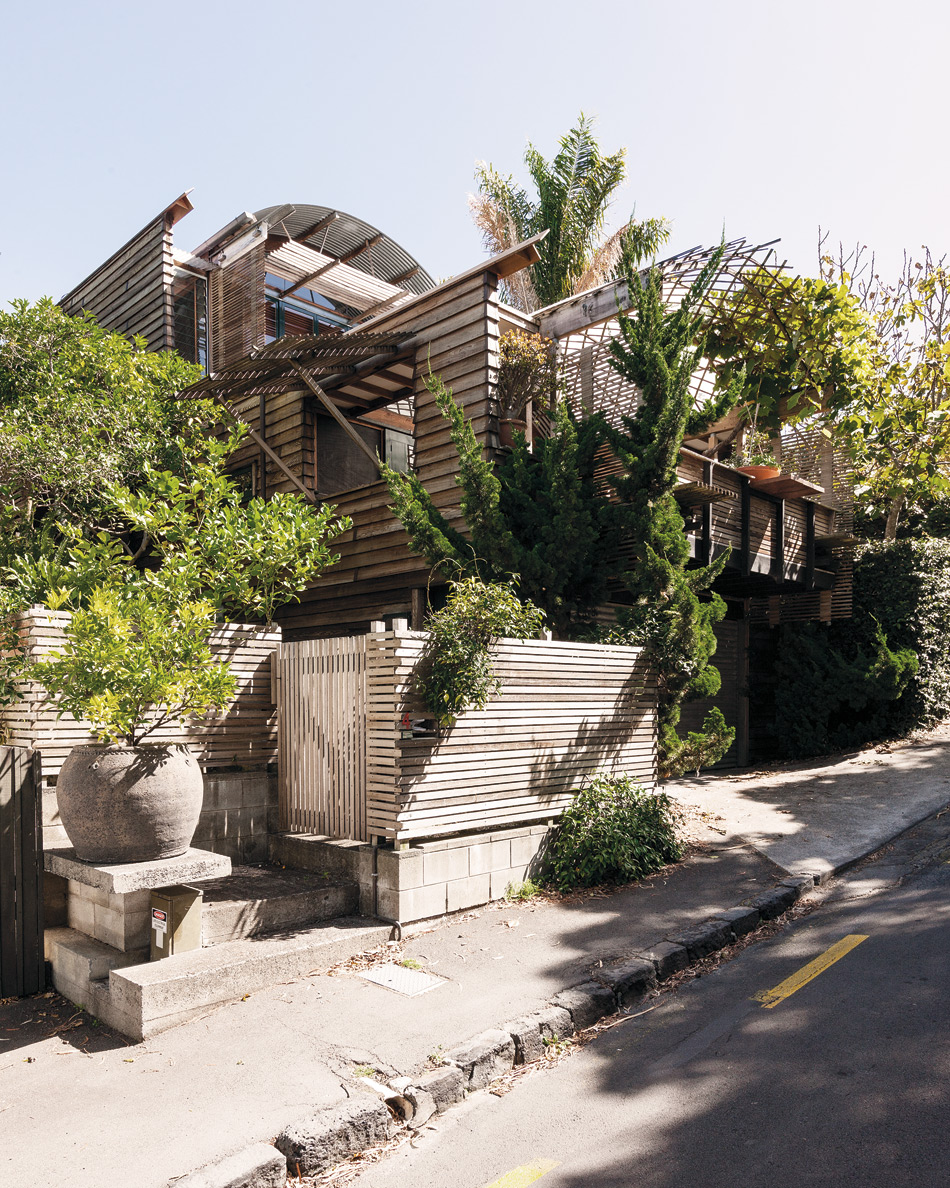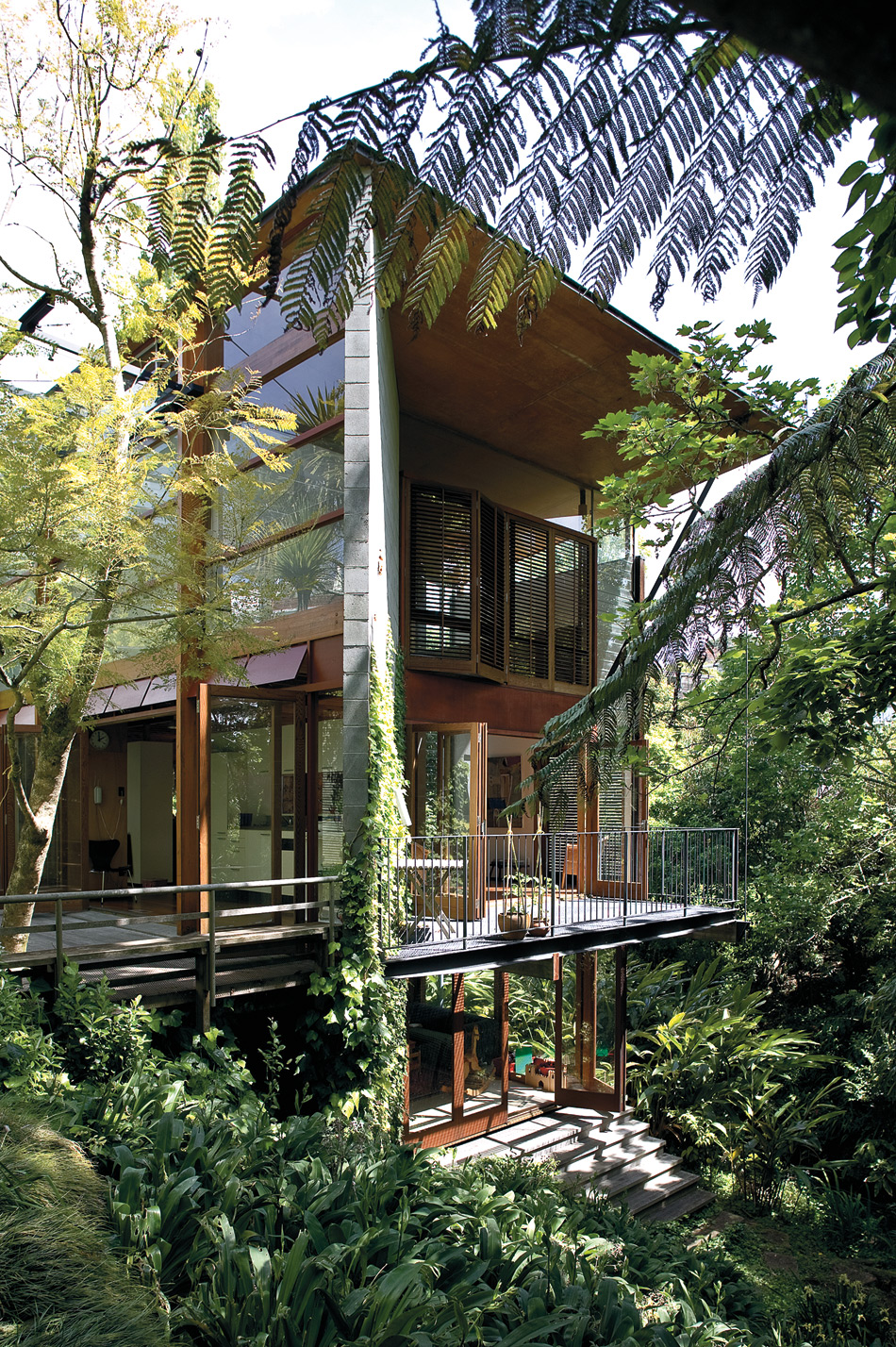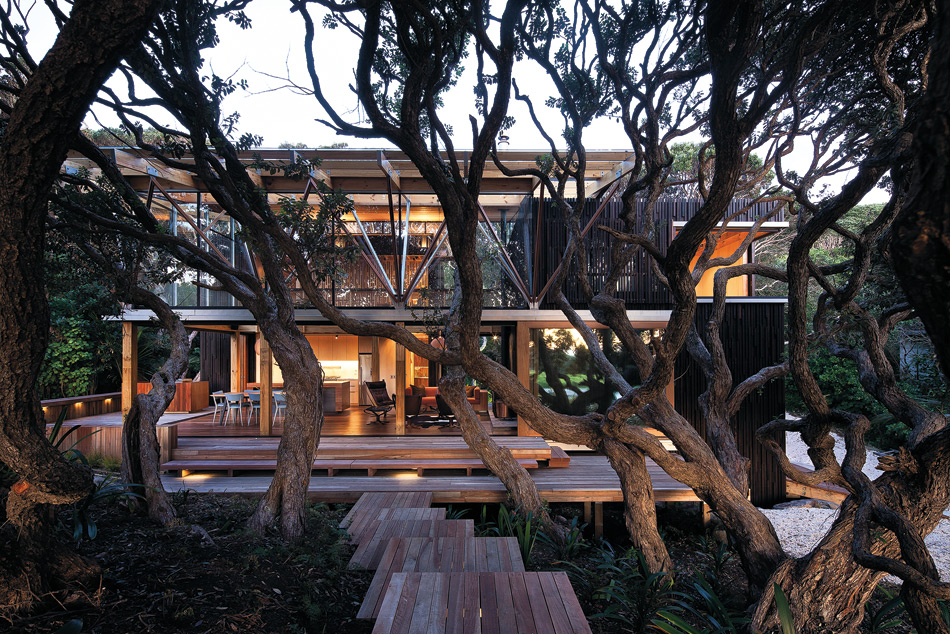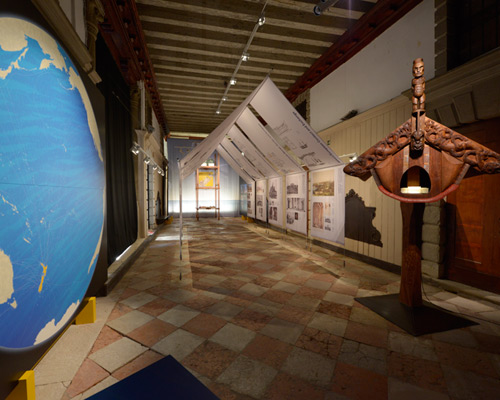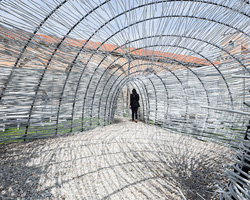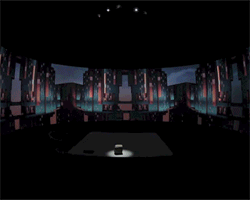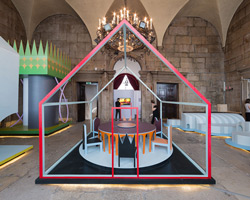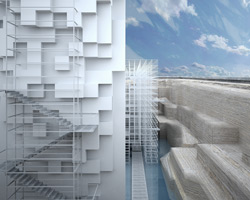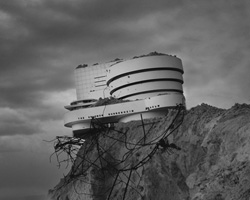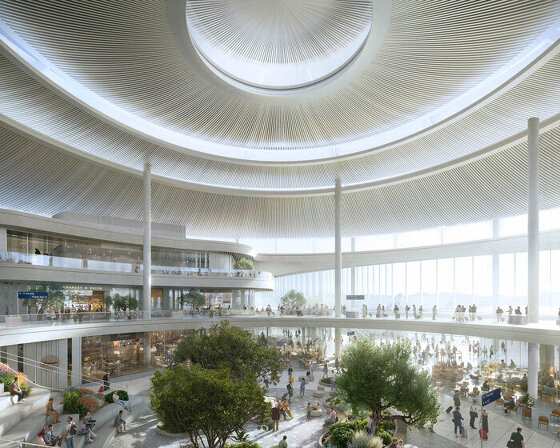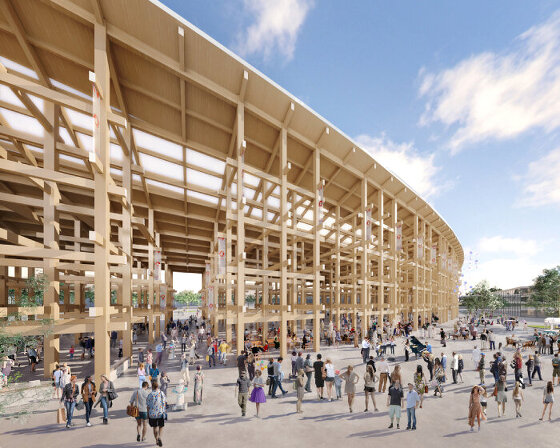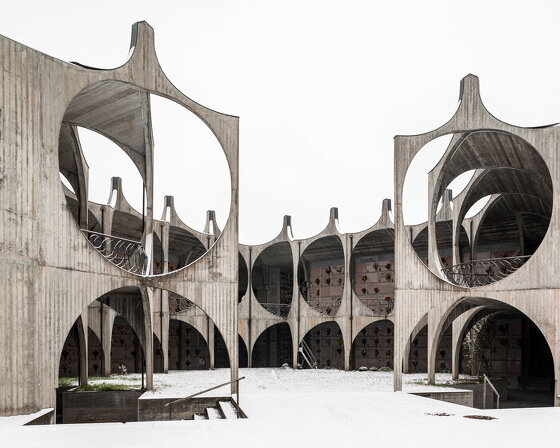new zealand pavilion at the venice architecture biennale 2014
photo by john gollings
all images courtesy of the new zealand institute of architects
for its first exhibition at the venice architecture biennale, new zealand presents a pavilion displaying inherently pacific design approaches, titled ‘last, loneliest, loveliest’. oceanic aspects in the country’s architecture create points of difference with international trends, which are becoming increasingly homogenous. the installation, curated by architect david mitchell, brings together a collection of objects produced by a team of nine creatives, which exemplify a lineage specific to the island nation.
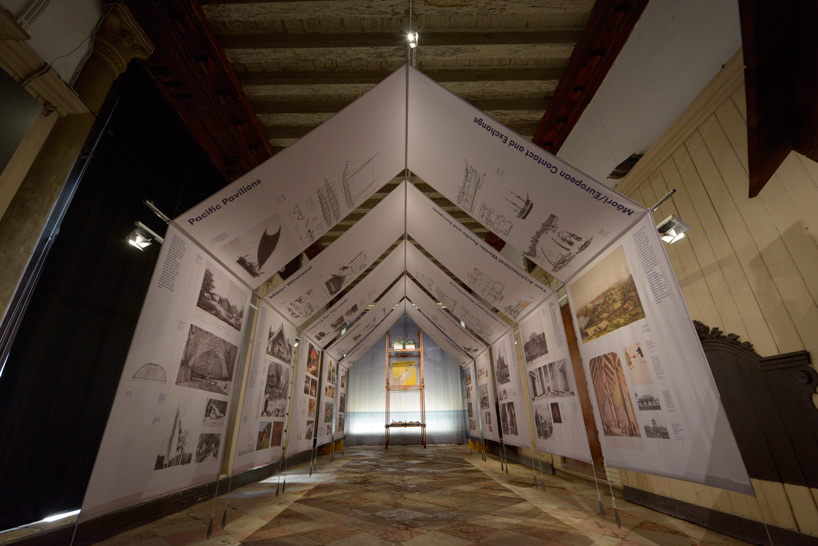
the sides of the fabric ‘tent’ are imprinted with images showing the pacific tradition of building
photo by john gollings
the installation includes: a globe illustration by kim meek showing pacific migration routes, a ‘tent’ with panels presenting the pacific architecture tradition, and a whatarangi (or raised māori storehouse) carved by tristan marler. at the back of the space, a small tower exemplifies the development of light-weight, post-tensioned timber construction technologies in the wake of the christchurch earthquakes of 2010 and 2011. contained within the frame are models and illustrations by frances cooper, making the case for an alternative and more ‘pacific’ way of inhabiting the auckland waterfront.
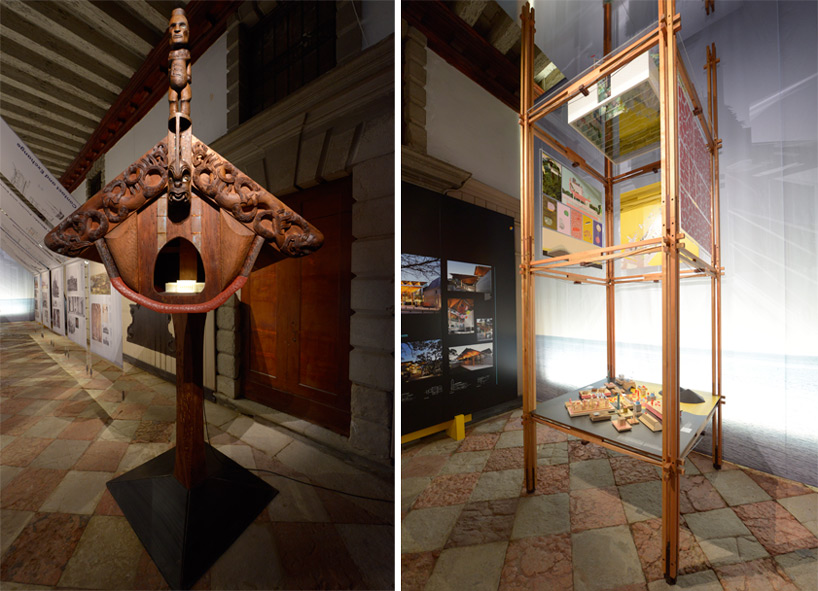
(left): the whatarangi is a small māori storehouse which is raised off the ground
(right): a small tower points to the development of light-weight, post-tensioned timber construction technologies
photos by john gollings
curator david mitchell states, ‘the pacific has a great architectural tradition, although hardly anyone honours it. that might be because it is not like european architecture, which is solid and massive and looks permanent. pacific buildings are timber structures of posts and beams and infill panels and big roofs. it’s a lightweight architecture that’s comparatively transient.’
last, loneliest, loveliest displays a century of buildings, beginning with the auckland war memorial museum (1920s) and ending with the extension to the auckland art gallery (2011) and shigeru ban’s ‘cardboard’ cathedral (1913).
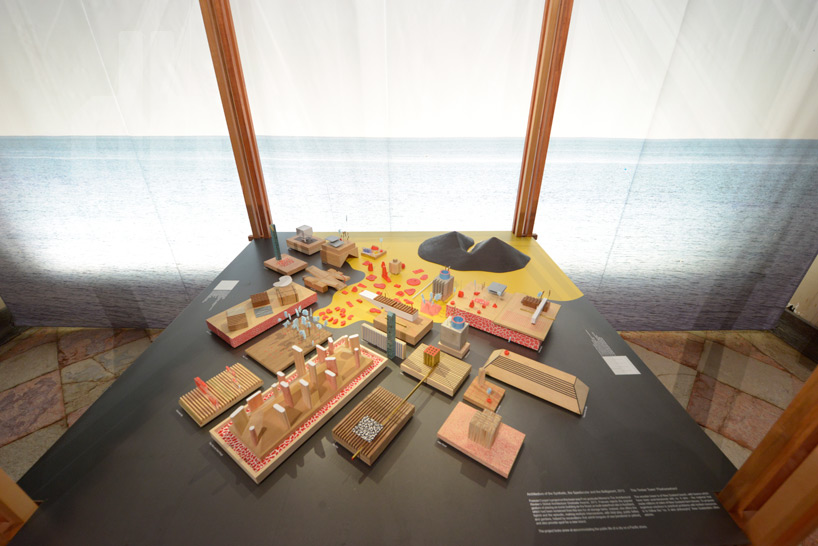
models and illustrative panels making the case for a more ‘pacific’ way of inhabiting the auckland waterfront
photo by john gollings
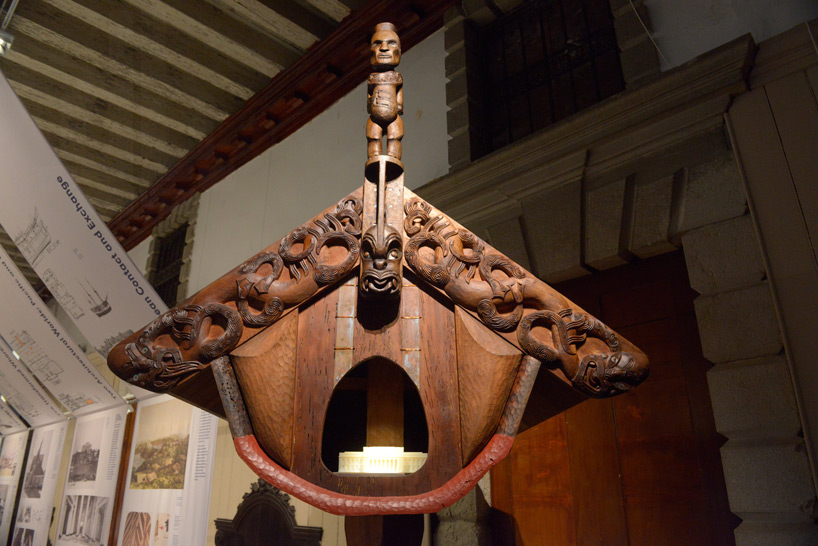
inside the whatarangi is a model of another storehouse, auckland war memorial museum (1929)
photo by john gollings
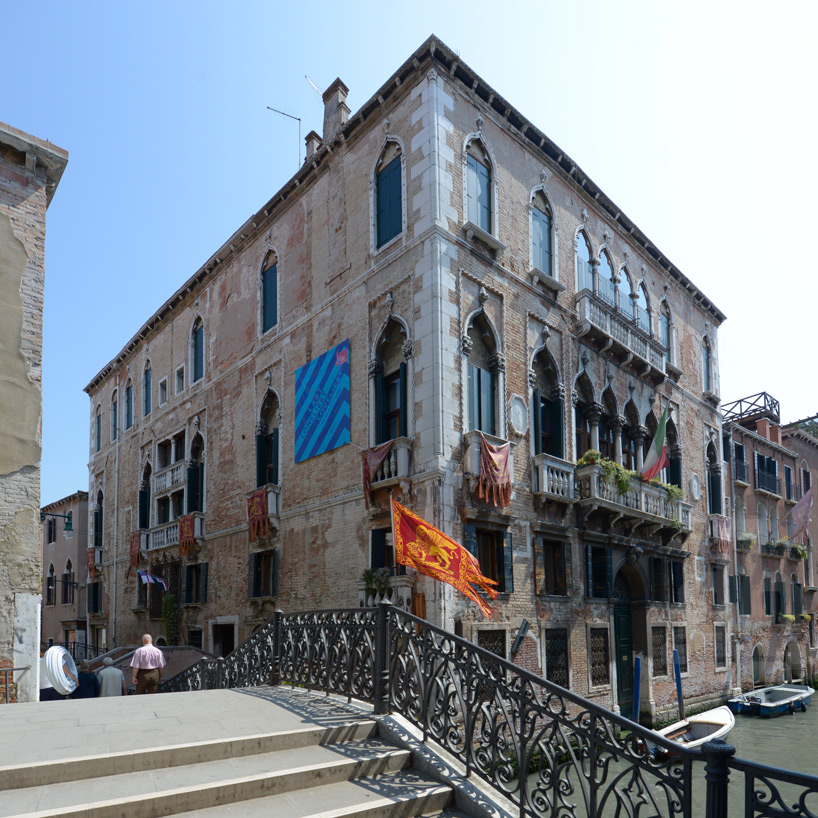
palazzo pisani, cannaregio
photo by john gollings
the exhibition, which was initiated by the new zealand institute of architects, is located in the palazzo pisani s. marina, calle de le erbe (off campo santa marina), cannaregio, 6104.
